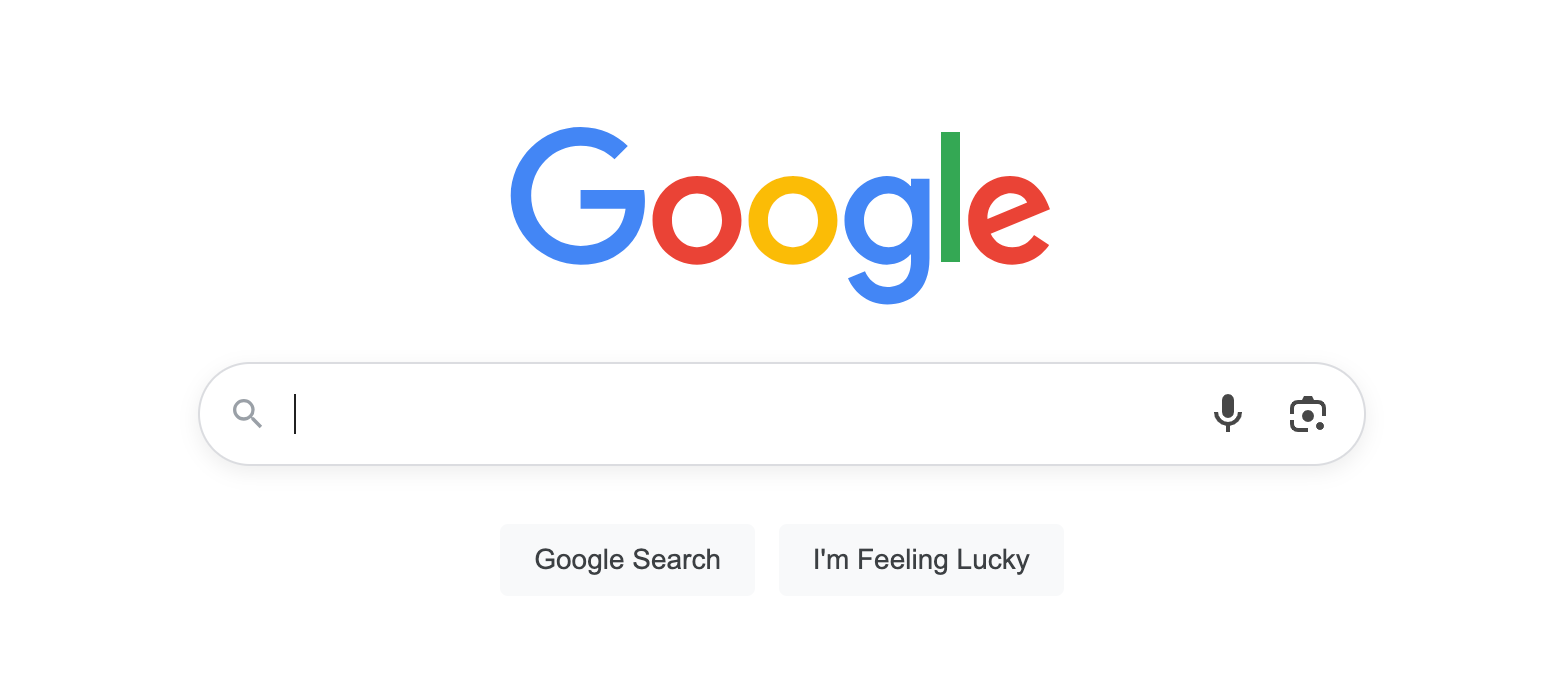Contents
You’ve made countless search queries, but have you wondered what goes on behind the scenes with each query? How does a search engine deliver accurate results within seconds of hitting the search button? Your curiosity has gotten the better of you, so you’re about to learn how search engines work beneath. Read on to learn the magic (actually, technicality) behind Google and Bing.

Google is the most widely used search engine, with a 5-billion-strong user base and robust infrastructure to process 16 billion search queries daily. Fun fact: In 2013, Google experienced an outage for a few minutes, and global internet traffic dropped a whopping 40% during those few minutes.
Given that search engines act as a gateway to the web, every website owner should optimize their site to rank as highly as possible. The higher your search rankings, the more traffic your website will receive.
What is a search engine?
Search engines are platforms that index a vast database of web pages. Users can then make search queries and fetch results from this database. A search engine has two main parts:
- Index. This is the vast, organized database of web pages. The search engine uses bots, called crawlers, to discover and add web pages to this database.
- Algorithm. Whenever a user searches for any keyword, the algorithm is the computer program that selects which information from the index will be displayed as the search result.
The core process behind search engines
Understanding how a search engine works begins with knowing its core processes. The three core processes are crawling, indexing, and ranking. Let’s explore how each contributes to a search engine’s operation.
Crawling — Discovering web content
Over 1.5 billion websites are hosted on the internet, each with many individual pages, and more websites are added daily. Search engines can’t rely on manual labor to scan for this vast amount of information across the web. Instead, they use automated bots, or crawlers, to do it efficiently.
Crawlers search across the internet for web pages. They can do this by first discovering the main page of a website, then following links on this main page to other subpages. They also crawl websites by reading a sitemap, which is a text file that lists all the pages on a website.
A sitemap is a roadmap for search engines to discover and index content. As a website owner, ensure you have a detailed sitemap, as it makes it easier for search engines to find and index your web pages. This sitemap should be hosted on a dedicated sitemap.xml web page, as in [YourDomain].com/sitemap.xml
Once a search engine’s crawler finds a web page, it analyzes the content to choose the essential information that needs to be indexed.
Crawlers face some challenges when discovering websites. For instance, search engines have a crawl budget, which is a limit on the number of pages crawled from a website within a given time frame. Crawlers are hosted on real servers and cost money to operate, so this limit is necessary because search engine companies don’t have unlimited resources.
To ensure your website is crawled thoroughly within the allotted budget, have a detailed sitemap that directs crawlers to the most important pages. Optimize your site’s visual elements to improve its speed and fix any technical issues that’ll cause the crawler to encounter an error. Likewise, remove duplicate content so that the crawler doesn’t fetch the same information twice.
Another challenge can be the presence of a broken or dead link on your website. A dead link is a link that previously contained information but no longer links to a valid destination. A crawler that analyzes this link will encounter a 404 Page Not Found error, wasting its crawl budget.
You can use a broken link checker to analyze your website for dead links and then remove them. Having no dead links helps you maximize a search engine’s crawl budget to index the most important pages.
Indexing — Organizing information for fast retrieval
After a crawler analyzes a web page, the next step is to add the essential information to the search engine index. Let’s explore how search engine indexing works and how to maximize this process for your website.
The search engine index is the database of all the content analyzed and processed by crawlers. When a user visits Google and searches for a phrase, the results are retrieved from this index based on the search query.
When a crawler visits and analyzes a web page, not all information from this page will be indexed. Rather, the crawler will process key signals that will finally be added to the index. These signals include:
Each page needs specific keywords that’ll describe its content to search engine users. By default, the crawler selects the phrase at the top of the page as its description, but this doesn’t always lead to accurate results.
You can control the keywords a search engine will index by adding a unique Meta Description HTML snippet. When the crawler sees this snippet, it’ll index the exact text as the description displayed on the search engine.
You should provide a meta description snippet that summarizes the content of the page. This description should be short (150 to 160 characters with spaces) yet engaging. When someone sees your web page on a search results page, the meta description significantly determines whether they’ll be interested in the content and click on it.
A web page can contain different forms of content, including text, videos, images, slideshows, and audio. Crawlers always analyze the type of content on a page, using the Schema.org framework.
Basically, Schema.org is a framework that assigns standardized tags to each type of content on a website. A video has a unique tag, text has a unique tag, an image has a distinct tag, and so on. A crawler checks these tags to determine the type of content on a page, then adds this information to the search engine index.
Web pages are frequently updated, whether with minor changes or major overhauls. Search engines don’t want to serve outdated information to users, so they must keep up with these updates.
Freshness refers to how recently a web page has been updated. A crawler finds this signal by checking the “last modified” date on the page. After crawling a page, the journey doesn’t end there. The crawler frequently recrawls the page to keep track of any changes made in the future. This signal ensures the crawler displays updated information to its search engine’s users.
Ranking — Delivering the most important results
Amassing information in a search engine index isn’t the most important task. The final and most critical step is ensuring that users see the right information from this index whenever they search for a topic. Search engines use sophisticated algorithms to determine this information, based on each user’s unique request. Let’s explore how search engine algorithms work.
When you search for any word or phrase, the algorithm is the computer program that determines which accurate results to display. Think of it as a set of mathematical rules that decide which information to pull from the search index.
A search engine ranking algorithm considers various factors to determine the accurate results to display from its index. These factors include:
Firstly, the algorithm analyzes the index to look for web pages that contain the same keywords as a search query. If the exact keywords are on a page, it’s the first indicator of relevance, but not the only one. Otherwise, website owners could simply game search rankings by repeatedly inserting keywords on a page.
After establishing relevancy via keywords, algorithms then analyze the web pages for more data, such as images, videos, and descriptive paragraphs.
For example, if someone searches for “cats,” the algorithm first seeks web pages with the keyword “cats” present on them, then looks for complementary information, such as images, videos, and a list of cat breeds. The additional information enables the algorithm to fully establish relevancy.
After establishing the relevance of many web pages, the search engine algorithm needs to prioritize those that provide quality information. An algorithm doesn’t have a specific “quality” metric, but rather uses proxy factors like backlinks.
A backlink is simply a link that a web page has from another site. The more backlinks a web page has from other prominent sites, the higher the quality assigned by a search engine algorithm.
Backlinks are the ultimate signal of search engine authority. Web pages with more backlinks rank significantly higher for relevant keywords.
A site may be highly relevant, but that’s not enough to give it high search rankings. The website also needs to be usable, particularly mobile-friendly and have a good page speed.
The algorithm checks if a web page loads quickly and if its content adjusts conveniently for small mobile screens. Sites that excel in these tests have higher search engine rankings.
With mobile phones making up 62% of online traffic, you should always optimize your website for mobile use. Content should automatically adjust to mobile screens and still look good to users.
Search engine algorithms also consider the personal context of each search query. Personal factors, such as the user’s location and search history, affect which relevant results will be displayed.
For example, someone searching for “football” in Germany will see results about soccer and the Bundesliga league, but someone searching for “football” from the U.S. will see results about American football and the NFL league. The location is what differentiates the relevant search results for each user. It’s one of several personalized factors that can alter search rankings.
SEO localization helps increase your website’s rankings for location-based queries. It entails tailoring your website’s content for a specific audience.
For example, if your target audience is both in the U.S. and France, you can create separate versions of each page, one in English and another in French. The U.S. version will be hosted under [YourDomain.com]/US, and the French version will be hosted under [YourDomain.com]/FR. A U.S.-based search engine user will be directed to the former, and a France-based user will see the latter.

Understanding search engine algorithms in-depth
Search engine algorithms are very complex computer programs. Each search engine’s algorithm has its quirks that affect how websites get ranked. Although we generally understand how they work, search engines don’t make their algorithms public. They are closely guarded to maintain a competitive edge and prevent websites from ‘gaming’ the algorithm.
We do know that search engine algorithms employ semantic analysis to understand websites. Likewise, they employ AI and machine learning to analyze vast search indexes and fetch the most relevant websites.
Machine learning and continuous algorithm updates
Google, Bing, and other search engines are increasingly harnessing machine learning and AI to improve search result accuracy.
For instance, Google uses the RankBrain algorithm to understand the intent behind a search query and suggest the most relevant web pages. This is just one example out of many AI-powered algorithms that search engines have deployed. As AI resources become easier to access, more algorithms will be created, and existing ones will be refined.
Conclusion
Search engines have constantly revealed insights into their algorithms, although not the complete details. Even without the complete details, you’ve learned exactly how to boost your site’s rankings:
- Use the right keywords.
- Create a detailed sitemap.
- Fix broken links.
- Use precise meta descriptions.
- Make your site mobile-friendly.
Follow these tips, and others described in this guide, to boost your SEO effectiveness.
FAQ
When a user searches for a topic, the search engine uses sophisticated algorithms to understand the search query, then sift through the index to extract the most relevant results. These results are then displayed to the user.
Search engines have large server clusters that operate in parallel, enabling them to handle millions of queries simultaneously.
For example, if you type “How to fix…” in Google, you’ll see suggestions related to something similar you’ve searched before, or a query that many other people have searched for in your location, e.g., “How to fix Window blinds,” “How to fix ceiling fans,” “How to fix a Rubik’s Cube,” etc.




